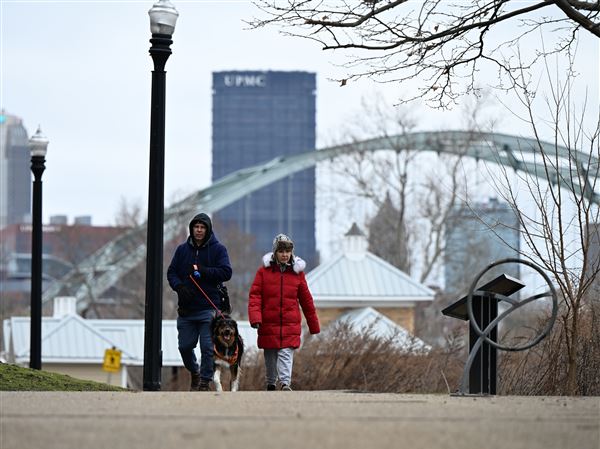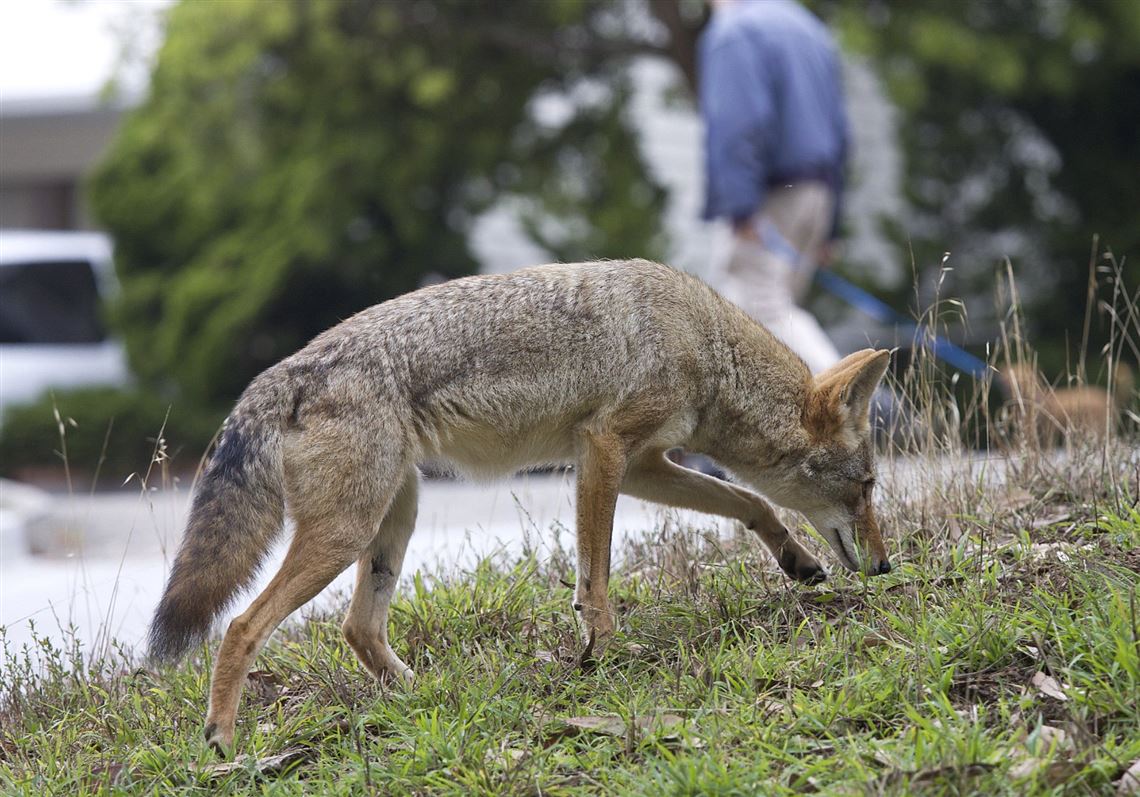In the distance, eyes are watching. Unseen, unheard, leaving no trace, southwestern Pennsylvania’s most successful predator virtually is everywhere, encroaching close to, and even within, human population centers.
But, no worries. Coyotes are a problem only when they’re seen, and even then the coyote myth is more dangerous than the actual animal.
“We’re almost maxed out in Pennsylvania as far as coyote density and range. They’re everywhere,” said Tom Hardisky, chief furbearer biologist for the Pennsylvania Game Commission. “We’re at the point where there’s nothing we can do to change the number of coyotes out there. Take some out of the population and they’ll be replenished in a year or two. Our strategy is to live with them — do things differently so we can coexist.”
Bigger than its purebred western cousin, the eastern coyote is a hybrid wolf-coyote mix believed to have originated in southeastern Canada when the wolf population there was being eradicated. Highly adaptable and prolific, the coyote range quickly expanded into New England in the 1930s. By the 1940s, they had spread to New York, New Jersey and Pennsylvania.
“But their spread didn’t involve the suburbs until later on in the 1980s and 1990s,” Mr. Hardisky said. “Food is pretty easy to get in urban and suburban areas, and shelter is no problem, either. They’ve adapted to the hustle and bustle of human activity. They’re very tolerant of humans.”
For the record, the subspecies was created after human habitation. It spread across the state within a current human lifetime and has virtually saturated suitable habitat, including suburbs and even cities. Humans didn’t sprawl into their space, coyotes entered ours.
“At the beginning, they moved into our area right up through the ’80s, and by the ’90s coyotes were documented in every county in the state,” Mr. Hardisky said. “There have been sightings in cities. And if you see one, you can be sure there are a dozen or more.”
Coyotes are highly adaptable, extremely secretive and work together, displaying remarkable intelligence. They can live in plain sight without being seen — dens can be dug under a shed or shrub, in uncut grassy fields or between rocky outcroppings. Suburban coyotes eat domestic and wild fruits, rodents, rabbits, newborn fawns — just about anything they can catch, including small pets romping around their own backyards. In cement and steel cities, particularly in older or rundown neighborhoods, coyotes can den under abandoned buildings and cement structures and provide a public service by eating rats.
Sightings of the wily animal are rare, and no one knows how many coyotes live in the state. The game commission’s estimate of near-maximum population saturation is based on habitat analysis. But even that is difficult. Coyote scat is extremely hard to find, and footprints are practically indistinguishable from those of small dogs.
Research in other cities suggests there could be more coyotes in Allegheny County than meet the eye.
Last fall, Illinois media were abuzz following the release of a comprehensive study of coyotes in the Chicago metropolitan areas. The joint Cook County Coyote Project/Urban Coyote Research Program videotaped some 400 coyotes living in Cook County and the city of Chicago and estimated that the total number is closer to 2,000.
Other research confirmed expanding coyote populations in several U.S. metropolitan areas, including New York City and Washington, D.C.
In Pittsburgh, unconfirmed anecdotal glimpses have been reported near Frick Park in the East End, the South Side Slopes and the West End Elliot Overlook Park. For decades, it has been suspected, but never verified, that coyotes thrive in the wild spaces around South Park and the ravines dropping from Plum and Penn Hills to the Allegheny River. Some Monroeville residents swear there are coyotes in Boyce Park, and coyote rumors abound from Trafford to Murrysville, Moon to McKees Rocks and Harmony to Economy.
In 2008, a woman walking her dog off-trail in North Park was terrified when a pack of coyotes chased the dog, surrounded the pair and nipped at the frightened, shaking pet. In 2010, a man shot a coyote on Mount Washington — a legal kill by game commission standards but of dubious legality in the eyes of Pittsburgh police.
Wildlife Conservation Officer Tom Kline, newly installed in western Allegheny County, was on the job barely three weeks when calls about problem coyotes in Ross led to a town meeting on how to contain the animals.
“I organized the meeting with township members in March. About 50 people voiced concerns,” Mr. Kline said. “People were seeing them in suburban areas where they didn’t think they’d seen coyotes before. We got some good feedback from people genuinely interested in what we can do.”
Despite the hype and eerie distant howls in the night, injuries from coyotes are rarer than sightings. The Chicago study reported not a single coyote-related injury in Cook County, despite growth of the urban coyote enclave. Coyotes don’t carry rabies as readily as skunks, bats and raccoons, and while pets are in perpetual danger of becoming lunch, humans — even young children — have little to worry about.
“There’s a perception given off from the news media, movies and comic books that coyotes are somehow dangerous,” Mr. Kline said. “We get people calling in afraid that coyotes would be chasing after them in their yards. They’re getting bad information about these animals.”
Although coyotes may be cohabitating in your neighborhood, you’re unlikely to see one, Mr. Hardisky said. And that’s how it should be.
The experts’ advice: Tightly close garbage cans, don’t leave pet food out overnight, don’t trust that unwatched pets will be OK even in a fenced yard, and care for feral animals with the knowledge that someday “Kitty” may never come back.
If you see a coyote, Mr. Kline said, treat the animal the same way you would respond to other wildlife.
“Don’t try to feed them or stand around long to take a picture. Just back away,” he said. “If you feel threatened, get big — spread your jacket so you look bigger — shout and get loud. That will scare them away.”
John Hayes: 412-263-1991, jhayes@post-gazette.com.
First Published: June 26, 2015, 4:00 a.m.



















